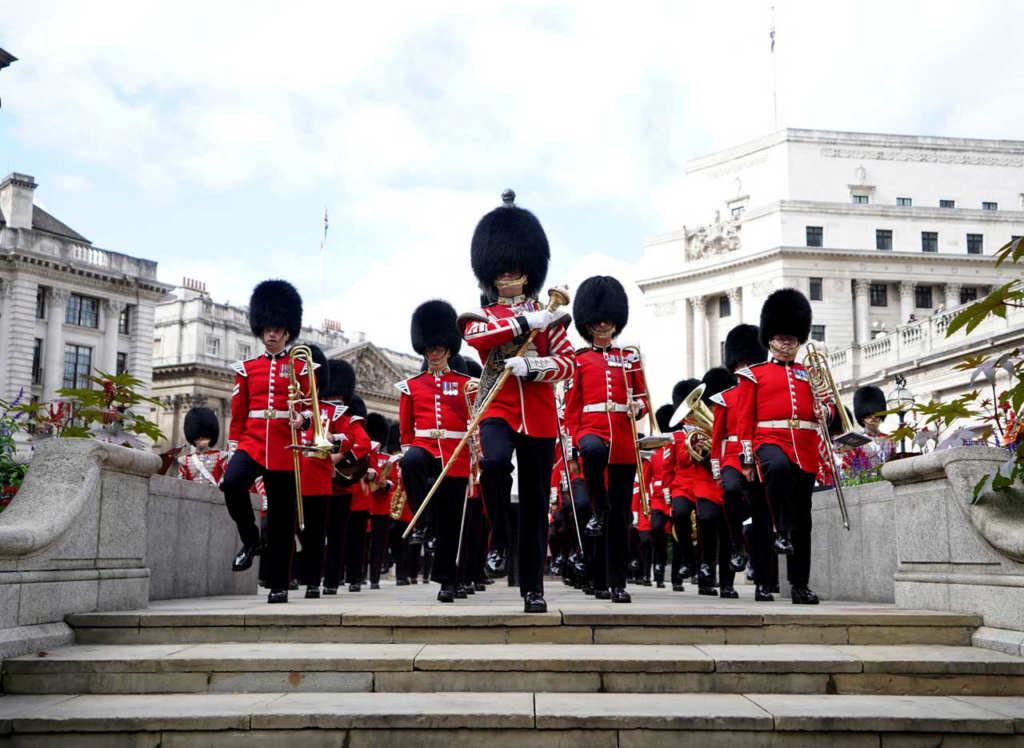
The coronation of Britain’s King is a lavish ceremony, unique in Europe, some of whose rules date back several centuries. The coronation of Elizabeth II in 1953 required more than a year of preparation.
mourning period
The coronation of the king is not done immediately after the death of his predecessor out of respect for the period of mourning and to allow time for the organization of the ceremony.
Elizabeth II, who became queen on February 6, 1952, the day her father died, was crowned 15 months later on June 2, 1953, in the presence of more than eight thousand people at Westminster Abbey.
British monarchy expert Bob Morris said the 73-year-old would likely prefer a “faster and smaller coronation”.
Coronation Ceremony
The ceremony takes place in Westminster Abbey and is presided over by the Archbishop of Canterbury, the first religious figure in the Anglican Church and second in its leadership after the British monarch.
The Archbishop of Canterbury first introduces the new king to an audience that cheers him on.
Thereafter, the King takes the Oath of Coronation (Coronation Oath Act) which was drafted in 1688. Under this oath he solemnly pledges to govern his people according to the laws passed by Parliament and to enforce law and justice “with compassion” and “do all that is possible” in order to preserve The Anglican and Protestant Church.
Then the Archbishops of Canterbury anoint with holy oil and bless the monarch seated on King Edward’s throne, the throne made in the 1300s and used at every coronation since 1626.
The king at last receives the royal insignia, especially the sceptre and then the crown, which the Archbishop of Canterbury wears on his head.
He is honored by members of the royal family and then a Communion ceremony is celebrated.
The coronation of the wife
Unless a different decision is made, if the new king is a man, his wife is proclaimed queen and crowned in a similar but simplified ceremony.
At Charles III’s coronation, his wife Camilla may not become queen but only the “king’s consort” because she is not the king’s first wife.
And if a queen ascends to the throne, her husband will not become a king and he will not receive the holy anointing.
british crown jewels
The United Kingdom is the only monarchy in Europe that still uses signs (royal costumes and attributes such as sceptres or some swords) during coronation ceremonies.
The St. Edward’s tiara, made in 1661 for the coronation of Charles II, is the tiara traditionally used during the ceremony. This crown is made of gold, silver, rubies and sapphires in particular, and weighs more than two kilograms.
The imperial crown is used at the end of the ceremony and during the royal procession. It is encrusted with 2,868 diamonds and was made in 1937 for the coronation of King George VI. It is also placed by the King during the annual opening session of Parliament.
Invited to the party
In 1953, 8,251 guests representing 181 countries and territories attended the coronation of Elizabeth II.
Among these, a large number of representatives of foreign kingdoms came from their countries to attend the ceremony, but none of them was a European king out of respect for royal traditions.
After the coronation ceremony, a large procession crosses the streets of London. Although the distance between Westminster Abbey and Buckingham Palace is less than a kilometer and a half, the procession stretched for a distance of 7.2 kilometers in 1953 to allow the largest number of Britons to attend.
=
